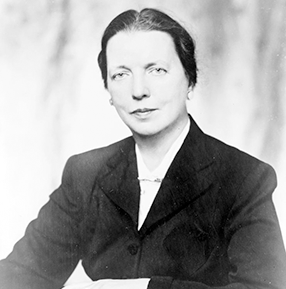A Tale
This youth too long has heard the break
Of waters in a land of change.
He goes to see what suns can make
From soil more indurate and strange.
He cuts what holds his days together
And shuts him in, as lock on lock:
The arrowed vane announcing weather,
The tripping racket of a clock;
Seeking, I think, a light that waits
Still as a lamp upon a shelf,—
A land with hills like rocky gates
Where no sea leaps upon itself.
But he will find that nothing dares
To be enduring, save where, south
Of hidden deserts, torn fire glares
On beauty with a rusted mouth,—
Where something dreadful and another
Look quietly upon each other.
This poem is in the public domain. Published in Poem-a-Day on December 10, 2022, by the Academy of American Poets.
“A Tale” first appeared in Body of This Death (Robert M. McBride & Company, 1923). Carol Moldaw, in “Form, Feeling, and Nature: Aspects of Harmony in the Poetry of Louise Bogan,” collected in Martha Collins’s Critical Essays on Louise Bogan (G. K. Hall and Co., 1984), writes that the poem “ends with an image of the double. It initially presents the impulse to go past the contrived signs of change and then to escape from the transitory altogether. The last two stanzas suggest that the end of the youth’s journey is to be very different from the peaceful and domestic light he seeks [. . .]. The language describing the landscape indicates nothing in reality, but instead a mythic, or inner landscape—the dark regions of the self. Though the double figures confront each other ‘quietly,’ it is with the quiet of terror. Stillness is not, the youth discovers, synonymous with peace.”

